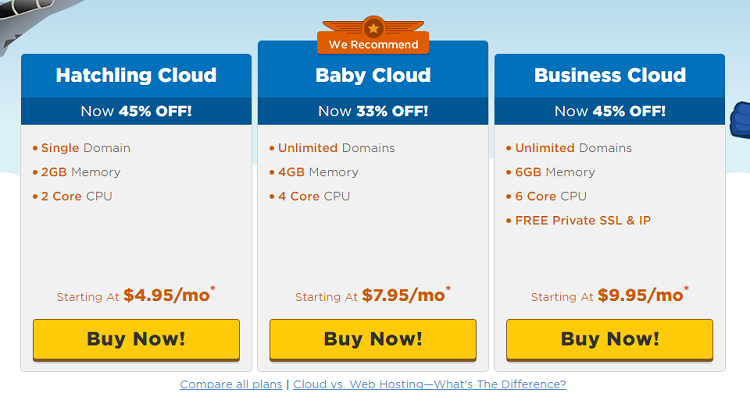Tiered pricing is a price point strategy that presents options for customers while boosting your chance to increase affiliate earnings.
The price point strategy is used in almost every (smart) business.
It goes like this:
- Low
- Medium
- High
Alternatively, you’ll typically see it as “free”, “recommended”, and “premium”.
Why do businesses do it and how can you use it in your affiliate marketing? Let’s find out.
Why You Need to Use Tiered Pricing
Tiered pricing uses a bit of psychology to entice the sale:
- Perceived value
- Availability
- Commitment
A strong brand can turn cheaper options into a valuable offer no matter the price (even free). This lets the mid-tier feel double in value whereas the 3rd-tier is almost quadruple. The lowest tier may do exactly what they want but for a few bucks extra they can get so much more!
It increases the perceived value and quality of the product.
Then you’re factoring the finances of the person which will determine the availability.

They may have already committed to a price point when visiting the site but now when met with better options they begin to rationalize the higher tiers.
In a way, it’s playing on their fear of missing out – their fear they will experience buyers’ remorse because they didn’t take the better option.
This gives them availability and options if they decide to upgrade.
Finally, it plays into their current standing with what they’re about to purchase.
The lower tiered items are perfect for those wanting to dabble while higher tiered is aimed at those experienced. The middle tier gives the best of both worlds for its price.
It presents options when an individual is set on a budget.
An Example of Tiered Pricing
Okay, this all sounds long-winded so let’s just go ahead and show something we’re all familiar with:

We’ve all seen these 3-tiered pricing tables.
Where does your eye immediately go?
To the “we recommend” of course – not only because it’s front-and-center but because of the design call-out. We naturally begin with this tier and then shift left and right to compare the plans.
But what happens?
Suddenly that lower plan that is cheaper doesn’t seem to be so hot because it’s half the product.
The higher tier looks interesting and would future-proof our subscription to the service. But, we’ve done some mental gymnastics and decided we don’t need all that.
So, we settled back into the recommended middle-tier.
The customer gets what they want for a fair price.
How it Benefits the Affiliate

If you were stuck promoting a single product within your niche you’d have a hard time selling unless you’re some kind affiliate maverick.
Why?
Imagine you’re going for the top-end of affiliate marketing – those big product launches that will cost customers thousands of dollars.
Would be awesome getting those commissions but you’re stuck promoting to a highly-specific demographic.
Now turn the tables and use a 3-tier pricing strategy…
With this you touch base with all types:
- Cheapskates and freebie hunters
- Your average consumers
- Hardcore, committed-types
You’ll make a few bucks from people going for the lowest tiers. You’ll make the most from your average customers. Then, you get them big windfall commissions from the whales.
It diversifies your affiliate revenue.
The Long-term Benefit of Tiered Pricing
Here’s what’s neat about having three options with your price point strategy:
- You’re able to segment and follow-up with the list
- You can promote horizontal or vertical offers
These buyers get funneled into customer lists based on what they’ve purchased.

This will allow you to send new promotions aimed at their specific economic demographic – which should/will increase their engagement and conversions.
You’re also able to “bump” people to higher tiers.
You can use marketing and ad push to promote new horizontal or vertical offers slightly higher than their average, desired price points. Over time, you can shift these individuals from microtransactions into a new tier meaning higher affiliate commissions.
Finding Your Price Point Strategy
Facebook is your friend.
You can use the social platform two ways to find the price point strategy;
- Manually reviewing FB group members
- Doing a Facebook ad or promotion
I’m part of a group called Decorating Love (don’t ask me why).

This, like many other FB groups, is dedicated to a specific niche topic or industry. It’s a very active group that discusses home renovations and craft projects.
If I were to enter this affiliate marketing space for the home improvement niche, then I’d join a couple of these and pay attention to products and services typically mentioned.
I’d keep a journal of the frequently asked questions, too.
Doing a bit of snooping you can begin to understand the economic demographics of the group:
- Looking at open profiles that list their “Work and Education”
- Recording mentioned prices and suggestions
- Seeing how people justify their purchase
This’ll take a bit of time but will develop your customer avatar.
Now you’re one step closer to finding the price point strategy when selecting affiliate products!
Alternatively:
You can shortcut all this by using Facebook ads.
A small-scale campaign will validate your money-making opportunities with the data provided by the Facebook advertising platform. There you’ll find the demographic data needed when selecting offers you’ll promote on the site.
Run three similar ads:
- One with the lowest pricing
- One with middle pricing
- One with high-end pricing
Create a custom audience and run the ad to these individuals.
Track the engagement.
This will give you real data about the best price points.
Using It in Affiliate Marketing
So…
What do you do with this information?
- Develop an infoproduct
- Promote existing tiered affiliate offers
- Use comparison tables
- Add incentives to simulate pricing tiers
Promoting your own infoproduct will give the greatest flexibility when using this pricing strategy.
You could create the product then “strip down” its features to create different tiers.
Offers that already have tiered pricing is a smart decision.

You could use reviews to talk about the offer (as a whole) while hinting toward the value of higher pricing which brings better features and benefits.
We’ve already covered pricing tables (so review that if you need).
Else, try adding incentives to three similar affiliate offers:
- Cheat sheets
- Whitepapers
- Bonus offers
- Consulting
You could set these products side-by-side and mention personalized incentives based on which were purchased.
It’s clunky but you could have the person email a copy of their receipt to prove they’ve done the transaction through your link – letting them “unlock” the incentives.
Last Words about this Tiered Pricing Strategy Thing

A lot of affiliates create bad habits when they’re too involved with a single product.
The earnings are there but they’re leaving money on the table by alienating others that may not have the money or have quite a bit and want more.
Plus, it’s an “eggs in one basket” type of scenario.
Implementing a tiered pricing strategy is damn simple.
- Find the main product you want to promote and wrap it with lower and higher end offers.
- Keep it within a 10-20% price margin so there’s an incentive to upgrade/downgrade.
- Then, slap on eye-catching call-outs to direct people to the one you’re mainly trying to push.
3-tiered pricing opens a lot of affiliate revenue opportunity.
You’d be a fool to skip out on it.
Now, your turn – how do you implement price point strategies in your affiliate promotions to increase sales, engagement, and satisfaction?




